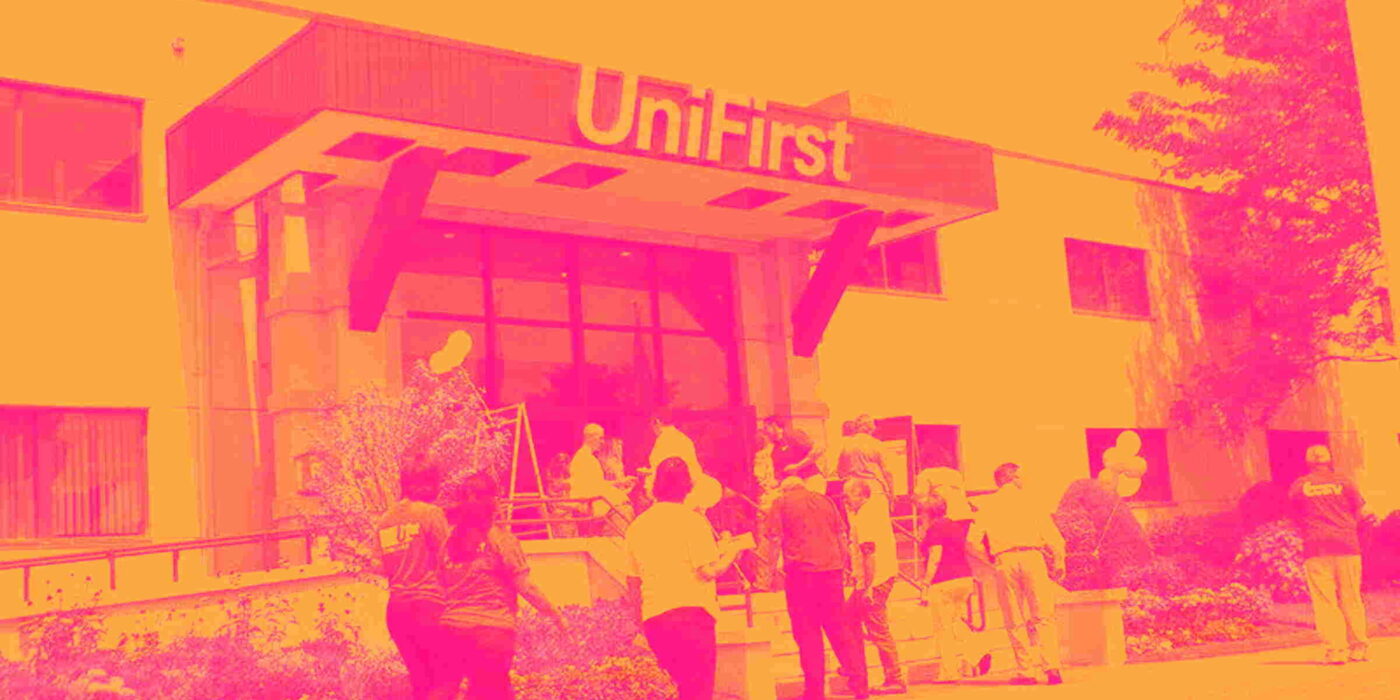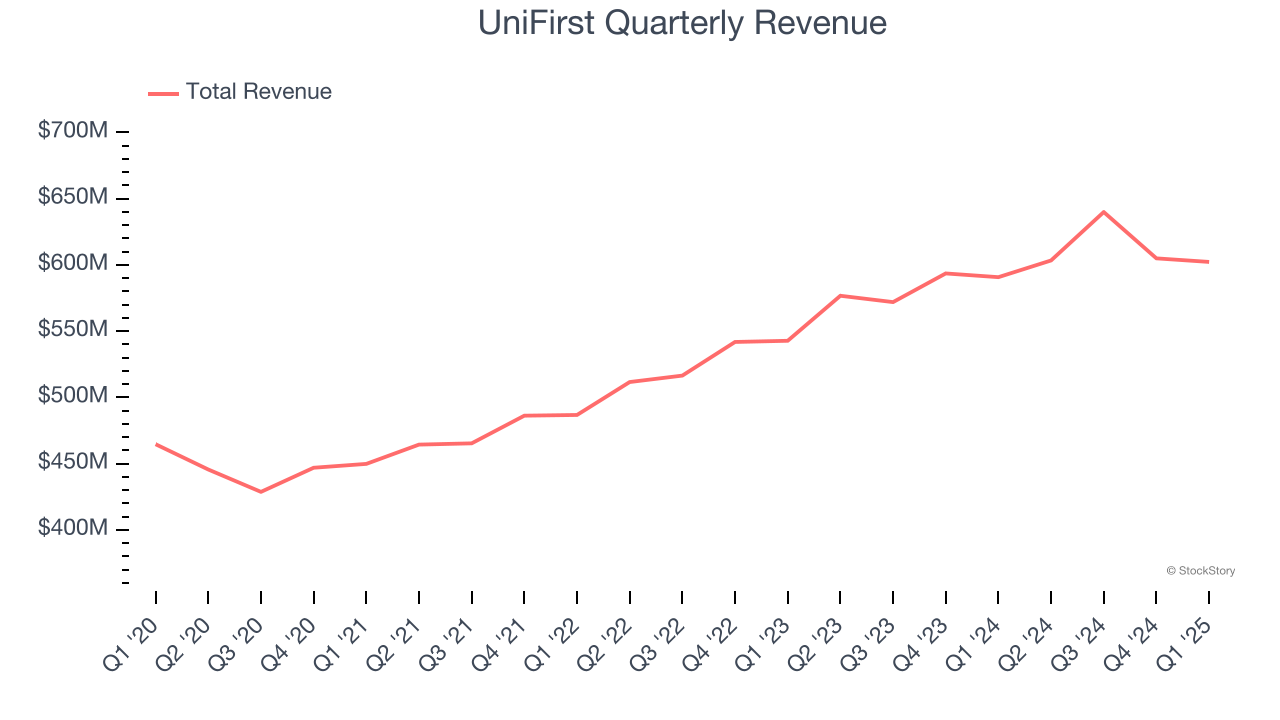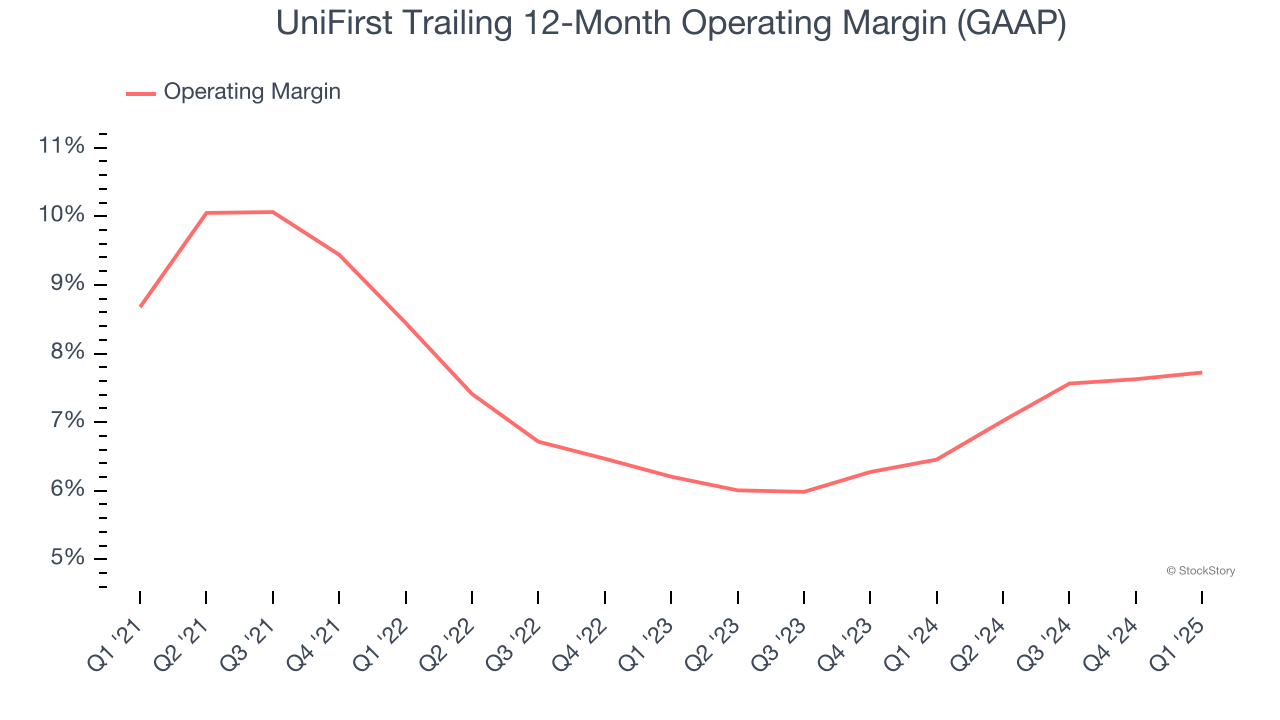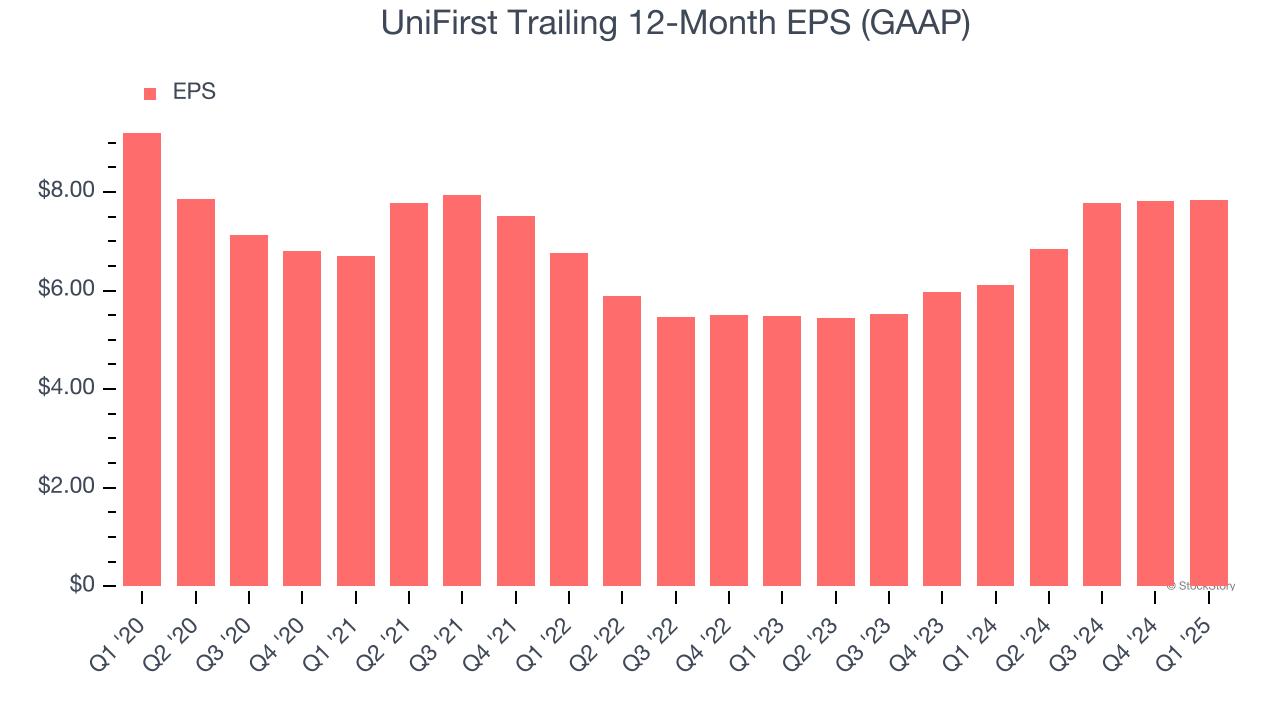
Workplace uniform provider UniFirst (NYSE:UNF) met Wall Street’s revenue expectations in Q1 CY2025, with sales up 1.9% year on year to $602.2 million. The company’s outlook for the full year was close to analysts’ estimates with revenue guided to $2.43 billion at the midpoint. Its GAAP profit of $1.10 per share was 8% below analysts’ consensus estimates.
Is now the time to buy UniFirst? Find out by accessing our full research report, it’s free.
UniFirst (UNF) Q1 CY2025 Highlights:
- Revenue: $602.2 million vs analyst estimates of $603.5 million (1.9% year-on-year growth, in line)
- EPS (GAAP): $1.10 vs analyst expectations of $1.20 (8% miss)
- Adjusted EBITDA: $68.92 million vs analyst estimates of $71.63 million (11.4% margin, 3.8% miss)
- The company reconfirmed its revenue guidance for the full year of $2.43 billion at the midpoint
- EPS (GAAP) guidance for the full year is $7.50 at the midpoint, beating analyst estimates by 4.5%
- Operating Margin: 5.2%, in line with the same quarter last year
- Free Cash Flow Margin: 6.3%, up from 4.6% in the same quarter last year
- Market Capitalization: $3.26 billion
Company Overview
With a fleet of trucks making weekly deliveries to over 300,000 customer locations, UniFirst (NYSE:UNF) provides, rents, cleans, and maintains workplace uniforms and protective clothing for businesses across various industries.
Industrial & Environmental Services
Growing regulatory pressure on environmental compliance and increasing corporate ESG commitments should buoy the sector for years to come. On the other hand, environmental regulations continue to evolve, and this may require costly upgrades, volatility in commodity waste and recycling markets, and labor shortages in industrial services. As for digitization, a theme that is impacting nearly every industry, the increasing use of data, analytics, and automation will give rise to improved efficiency of operations. Conversely, though, the benefits of digitization also come with challenges of integrating new technologies into legacy systems.
Sales Growth
A company’s long-term sales performance is one signal of its overall quality. Any business can experience short-term success, but top-performing ones enjoy sustained growth for years.
With $2.45 billion in revenue over the past 12 months, UniFirst is a mid-sized business services company, which sometimes brings disadvantages compared to larger competitors benefiting from better economies of scale. On the bright side, it can still flex high growth rates because it’s working from a smaller revenue base.
As you can see below, UniFirst’s sales grew at a decent 5.6% compounded annual growth rate over the last five years. This shows its offerings generated slightly more demand than the average business services company, a useful starting point for our analysis.

Long-term growth is the most important, but within business services, a half-decade historical view may miss new innovations or demand cycles. UniFirst’s annualized revenue growth of 7.7% over the last two years is above its five-year trend, suggesting its demand recently accelerated. 
UniFirst also breaks out the revenue for its most important segment, Core Laundry Operations. Over the last two years, UniFirst’s Core Laundry Operations revenue (uniform rental and laundering) averaged 7.6% year-on-year growth.
This quarter, UniFirst grew its revenue by 1.9% year on year, and its $602.2 million of revenue was in line with Wall Street’s estimates.
Looking ahead, sell-side analysts expect revenue to remain flat over the next 12 months, a deceleration versus the last two years. This projection is underwhelming and implies its products and services will see some demand headwinds.
Today’s young investors won’t have read the timeless lessons in Gorilla Game: Picking Winners In High Technology because it was written more than 20 years ago when Microsoft and Apple were first establishing their supremacy. But if we apply the same principles, then enterprise software stocks leveraging their own generative AI capabilities may well be the Gorillas of the future. So, in that spirit, we are excited to present our Special Free Report on a profitable, fast-growing enterprise software stock that is already riding the automation wave and looking to catch the generative AI next.
Operating Margin
Operating margin is one of the best measures of profitability because it tells us how much money a company takes home after subtracting all core expenses, like marketing and R&D.
UniFirst was profitable over the last five years but held back by its large cost base. Its average operating margin of 7.4% was weak for a business services business.
Analyzing the trend in its profitability, UniFirst’s operating margin might fluctuated slightly but has generally stayed the same over the last five years. This raises questions about the company’s expense base because its revenue growth should have given it leverage on its fixed costs, resulting in better economies of scale and profitability.

This quarter, UniFirst generated an operating profit margin of 5.2%, in line with the same quarter last year. This indicates the company’s overall cost structure has been relatively stable.
Earnings Per Share
We track the long-term change in earnings per share (EPS) for the same reason as long-term revenue growth. Compared to revenue, however, EPS highlights whether a company’s growth is profitable.
Sadly for UniFirst, its EPS declined by 3.2% annually over the last five years while its revenue grew by 5.6%. However, its operating margin didn’t change during this time, telling us that non-fundamental factors such as interest and taxes affected its ultimate earnings.

In Q1, UniFirst reported EPS at $1.10, in line with the same quarter last year. This print missed analysts’ estimates. Over the next 12 months, Wall Street expects UniFirst’s full-year EPS of $7.83 to shrink by 2.1%.
Key Takeaways from UniFirst’s Q1 Results
We enjoyed seeing UniFirst beat analysts’ full-year EPS guidance expectations this quarter. On the other hand, its EPS missed and its revenue was just in line with Wall Street’s estimates. Overall, this was a mixed quarter. The stock traded up 1.8% to $178 immediately following the results.
Should you buy the stock or not? The latest quarter does matter, but not nearly as much as longer-term fundamentals and valuation, when deciding if the stock is a buy. We cover that in our actionable full research report which you can read here, it’s free.
